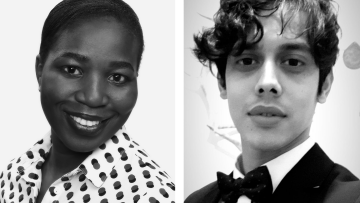Söderbacka & Sharma: ”Exploring heating solutions for Söderfjärden Meteoria Visiting Center

The article was published in Vaasa Insider on 30.4.2021.
Söderfjärden is a unique visiting center in the middle of a 6 km wide meteorite impact crater created at least 520 million years ago, just 10 km south of the city of Vaasa. The visiting center is maintained by the Sundom Bygdeförening r.f. opening the center to the public an exhibition rooms (birds and meteorites), conference barn and the Astronomy Association Vaasan Andromeda RF maintains the Astronomical observatory, old farming machinery barn, bird watching tower, and a large outdoor model of the solar system.
However, for Novia University of Applied Sciences, the energy system has been of great interest and has been involved in the planning and development of the energy system already from 2008. Under the Off-Grid DIY Renewable Energy for Rural Development project, Novia UAS has constructed a Biomeiler Heat Recovery Compost for the supplement heating of the conference barn.
The project is funded by the EU (the European Agricultural fund for Rural Development) through LEADER and its LAG’s (local action groups) in Estonia, Finland, Latvia, Lithuania, and Sweden. Finland is represented by Novia UAS, Maaseudun Sivistysliitto and ProAgria Länsi-Suomi.
The project was initiated to connect actors in the Baltic Sea region and create a platform where ideas, solutions, and activities connected to off-grid energy solutions could be spread to a wider community and audience. Even though the entire energy system at Meteoria is interesting, today focus is on the biomeiler!
The energy system at the Meteoria comprises solar panels with total of 4.5 kW, a wind turbine of 3 kW, a diesel generator of 11kW that is used as backup during cold winters, batteries with a storage capacity of 60 kWh and recently added is a biomeiler.
The complete renewable energy system is built up as a collection of IoT (internet of things) devices. Live and historical data of the system can be found at http://iot.novia.fi/meteoria/. In 2020, the total energy produced at Meteoria was 9140 KWh of which 52 percent came from solar energy, 33 percent wind energy, 12 percent bioenergy, and 3 percent diesel fuel. In 2019, the total energy produced was ca 4490 KWh with 19 percent from diesel combustion because installed solar panels were at 1.2 kW.
The center continuously works towards having a 100 percent green energy system and would like to cut dependency on the diesel generator in order to help fight global warming.
The biomeiler shown below was built with the help of Sundom villagers who contributed manpower and compost material to supplement the use of the diesel generator. The heat produced during the decomposition of biomass (woodchips and horse manure) is collected through a working fluid, water in this case that circulates through a 300 m hose spiraled through three layers at 100m per layer of a total volume of 50 m3 heap, with more than 24 temperature sensors planted in various spots and layers of the heap. The hot water is taken directly from the Biomeiler to a fan-equipped convector in the meteorite exhibition room and conference barn for heating.
The biomeiler that came into operation in December 2019, has gone into hibernation during the cold periods and steps to revamp the decomposition were applied. Hay bales and tarpaulin were used to insulate the biomeiler against the freezing and windy Finnish winters. So far, the biomeiler has produced 1300 kWh hot water energy and is currently out of operation.
The observation so far is that the biomeiler is too small and goes into hibernation when the energy would be most needed and the Meteoria site is too windy for such a solution. A thermal storage of 500 L capacity water tank was introduced in the autumn as a test and demonstration for future development, charged with surplus energy from all the energy sources. The Meteoria energy system presents an interesting Living lab site especially with the growth of renewable energy and IoT and is being implemented in education in Novia UAS.
The Off-Grid DIY Renewable Energy for Rural Development (Off-grid project) is in progress from 1 October 2018 until 31 June 2021.
Contact Person: Hans Linden, Shiva Sharma Novia UAS